-

Parrotfish
A charismatic parrotfish poses for a picture, showing off its pretty colors. -

School of Parrotfish
A large school of parrotfish swim over the reef, occasionally stopping to munch on some coral. -
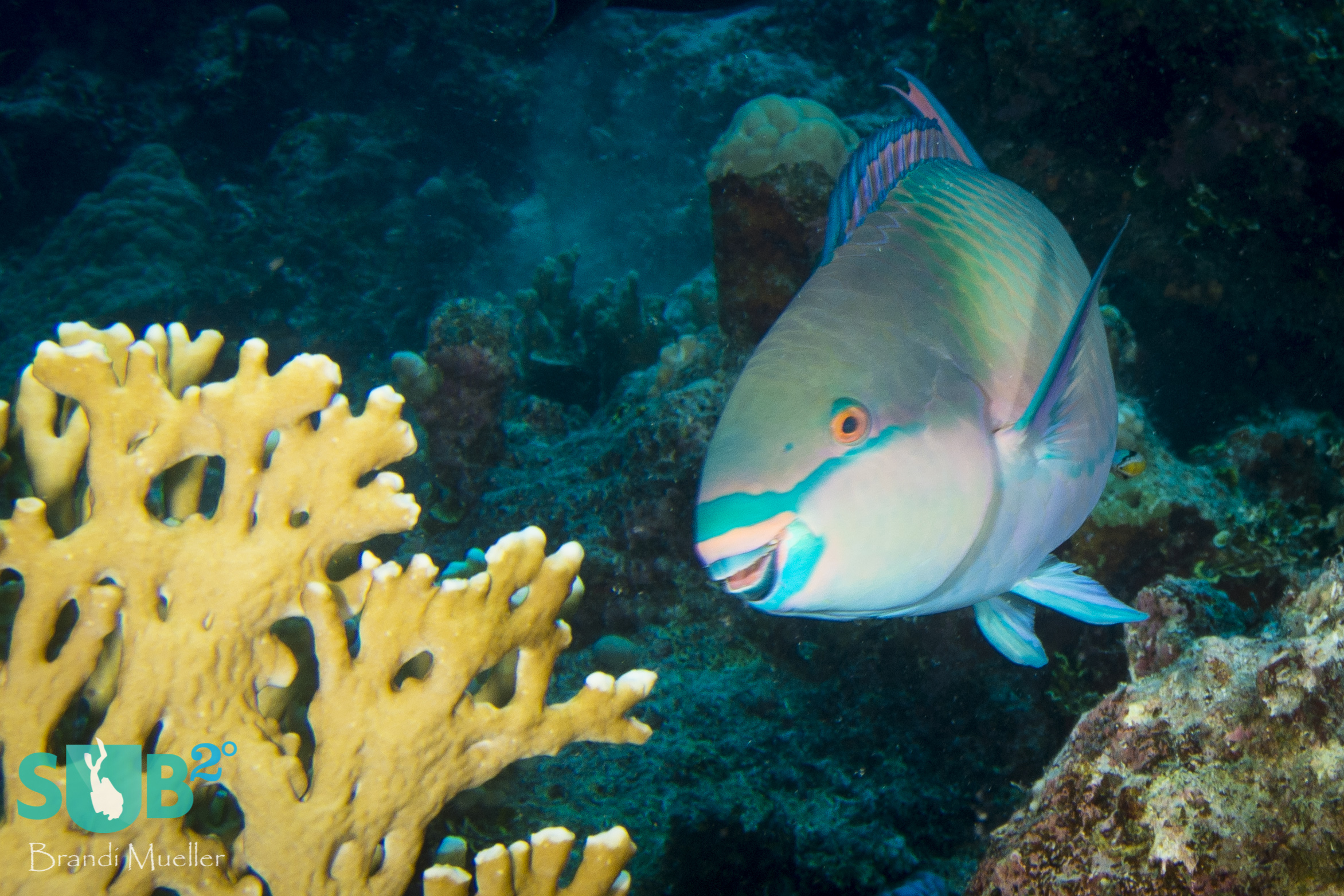
About to Take a Bite
This parrotfish was about to take a bite of the coral, although parrotfish do not eat the coral for nutrition. They feed on the algae that is growing on the coral. -
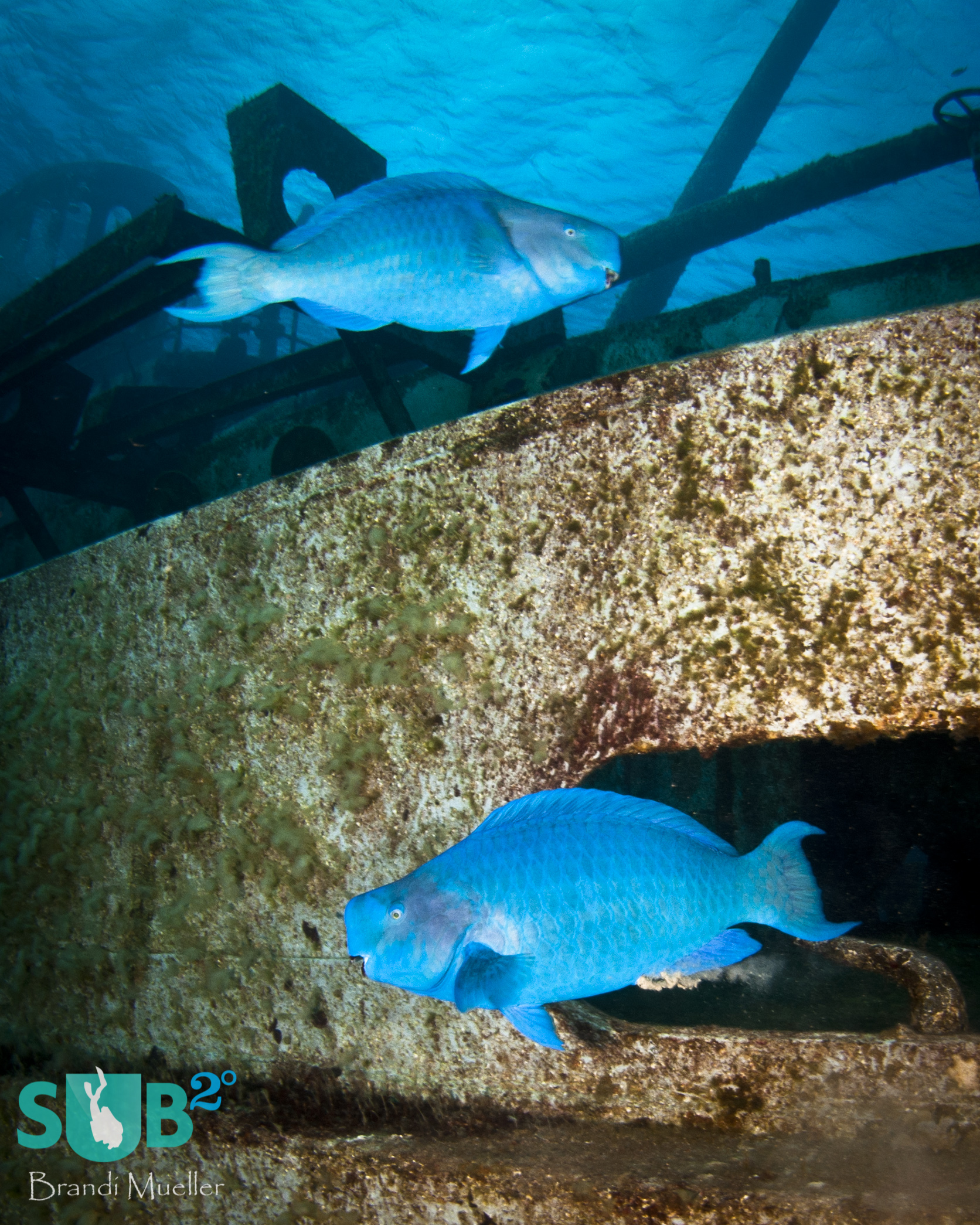
Parrotfish on the Kittiwake
Two bright blue parrotfish cruise the deck of the USS Kittiwake, an artifically sunk wreck in the Cayman Islands. -
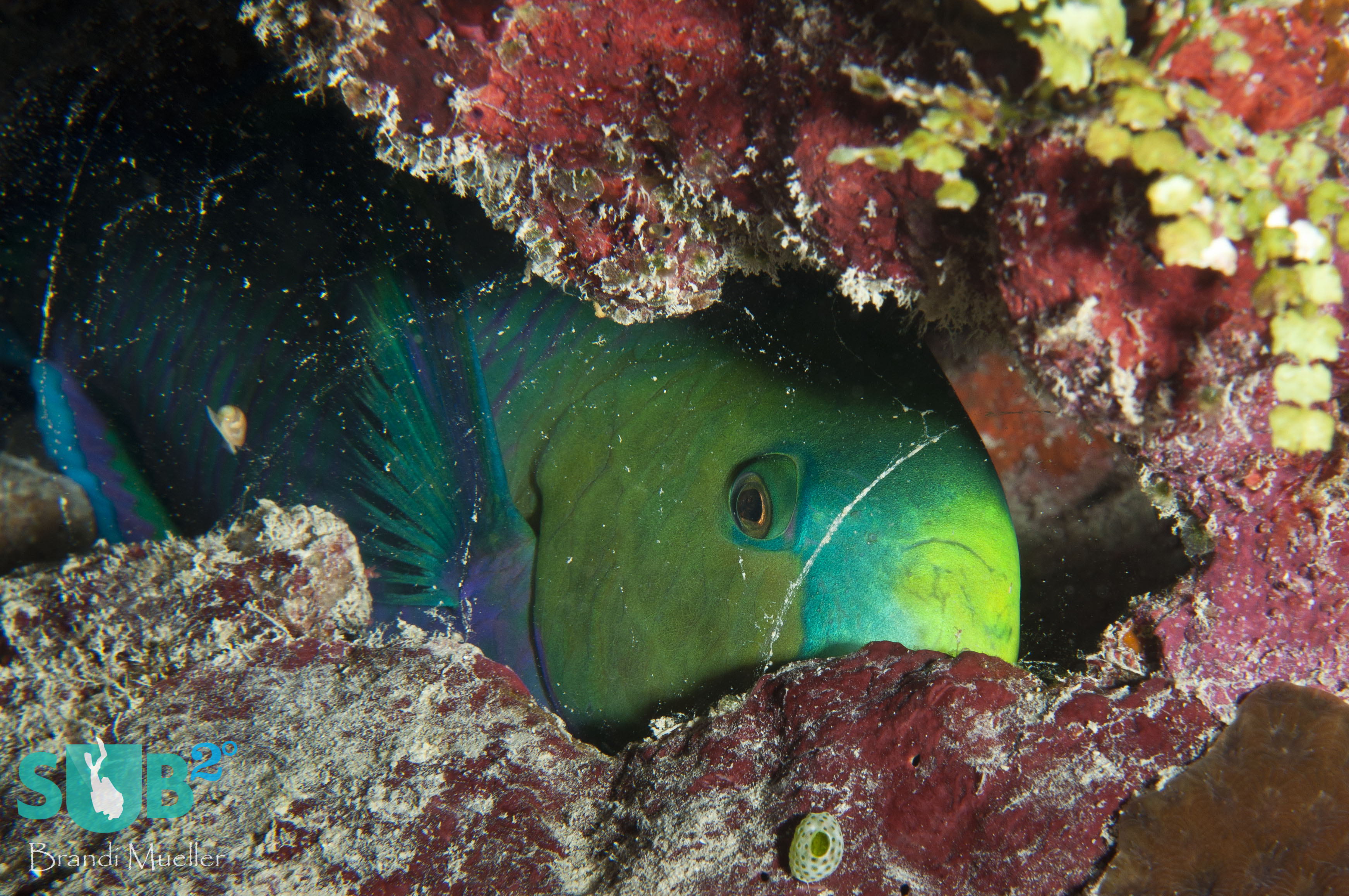
Sleep Tight
Tucked in for the night, this parrotfish has produced a mucus bubble around its body to protect it from predators during the night. The bubble hides its scent and will awaken the parrotfish if popped.
The Secret Life of Parrotfish
Parrotfish are a favorite find on any dive. Their bright colors make them stand out, and include a variety of vivid greens, blues, purples, yellows, reds, and blacks. Usually found swimming along the coral reef, they can be seen munching on coral with their parrot-like beaks; sometimes they are alone but usually they are found in groups. As if their pretty colors didn’t make them cool enough, here's how remarkable they really are.
Makers of Sand
Think back to your favorite white sandy beach. The golden sunlight reflecting on turquoise water as you sink your toes into the soft, warm sand. Well, you are stepping in parrotfish poop. Parrotfish eat algae that grow on coral, but to get to the algae they use their beak of fused teeth to bite into the coral. To obtain the algae, pharyngeal teeth found in the throat help crush the coral down to small grains of sand. Then they get rid of the sand by excreting it, and thus, we have parrotfish poop, otherwise known as sand. It’s fairly common to see parrotfish underwater with a cloud of sand behind them.
The beak and the pharyngeal teeth in the throat are constantly growing to replace damage from the hard coral. This biting of the coral is also very audible, and many divers can recall hearing the clicking noises of the parrotfish beaks on the coral. All that coral biting and sand pooping can lead to a single parrotfish creating over 800 pounds of sand a year!
Color Variations
It is estimated that there are more than 60, and possibly as many as 90, species of parrotfish. Over time, it has been difficult to find more exact estimations because parrotfish have so many different color variations, even within the same species.
Parrotfish are polychromatic, meaning they can change color throughout their lives. Juveniles will change their color patterns as they become adults, and males and females also differ in colors. Even adults of the same sex may be in drastically different colors, such as in the case of the alpha male in a harem, who would be much more brilliantly colored than the other non-alpha males.
Sex Changes
Parrotfish can change sex throughout their lives. Most parrotfish start out as females, and when they mature they travel in harems with one dominant or alpha male. If the male dies, one of the females will grow larger, change color, and change into a male to take over the harem.
Different species of parrotfish have different means of changing sexes through their lifecycles. In some species, the fish can change from one sex to the other and then back to its original sex. Other species can start as females, and only a few of them change into males. Having so many females is a great evolutionary trait for reproduction because it allows for many sexually mature females and a larger potential for numerous offspring by the numerous females releasing multiple eggs.
Parrotfish are pelagic spawners, spawning at dusk. This means that the females release buoyant eggs into the water and the males release their sperm nearby, and optimistically, the eggs become fertilized. Then the eggs drift around until they settle in different areas in the coral for hatching. This helps spread the eggs over long distances, and this mode of transport does work effectively because parrotfish are found all over the world.
Sleeping Bags
Parrotfish are active and often very social in the day, but when night falls they find a hiding place for the night. Many parrotfish species are able to create a mucous bubble or cocoon to surround them and protect them from predators.
It’s thought that the cocoon hides the scent of the sleeping parrotfish, making them difficult to find. It also works as an alarm system; if a predator gets too close and pops the bubble, the parrotfish will wake up and escape. The mucous bubbles are either blown from their mouths or secreted from an organ on their head.
There’s no denying the beauty of the parrotfish, so next time you’re diving and see a group of parrotfish, see if you can pick out the brightly colored alpha male or find a sleeping parrotfish in its cocoon. And remember to thank a parrotfish the next time you wiggle your toes in soft sand.
Further Reading
State of the Reef: An Introduction
Featured Posts
-
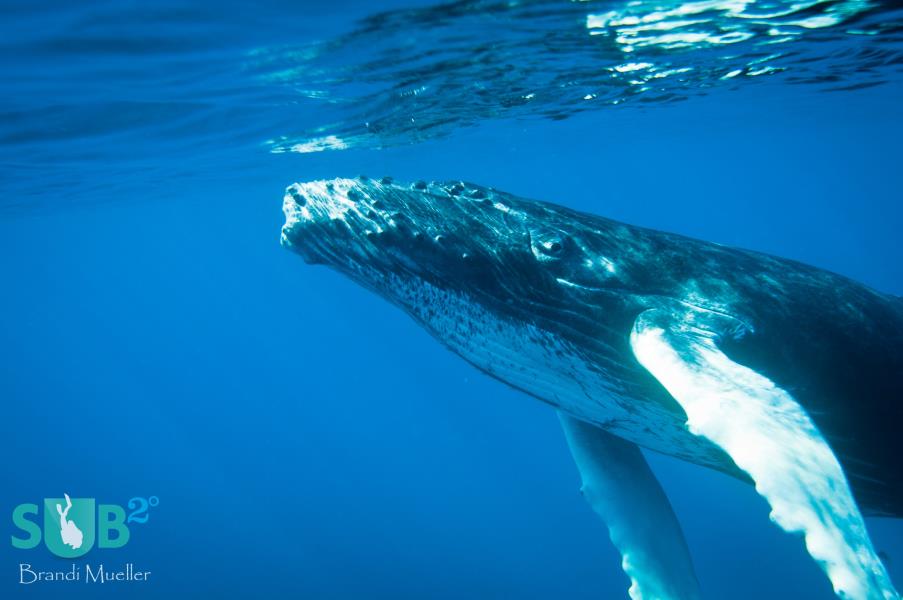
Humpbacks of the Silver Bank
Nothing compares to being in the water with a 40 foot humpback whale. These beautiful and graceful animals are nothing short of amazing. The Silver Bank is a winter gathering place for humpbacks and more recently, snorkele...
-
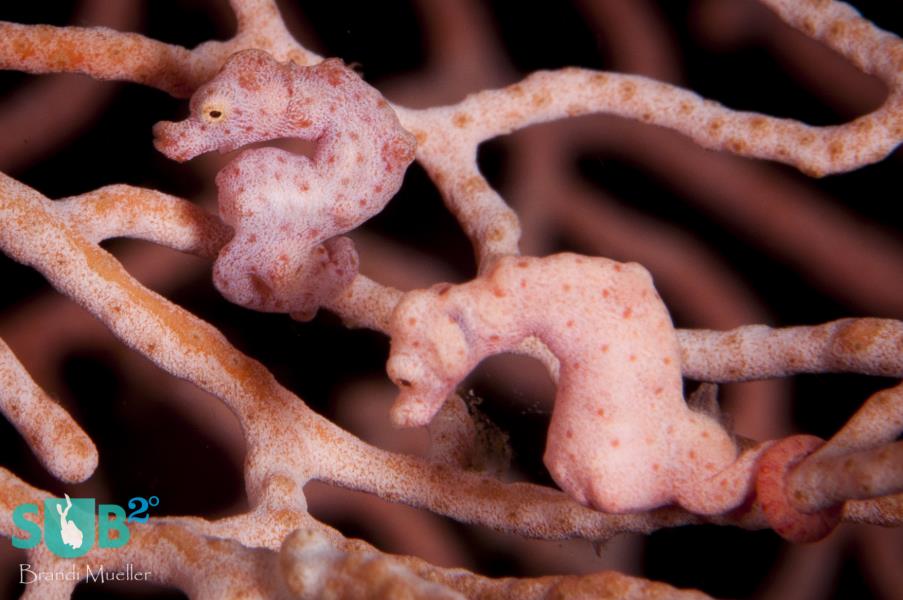
On Seahorse Love
When boy meets girl in the world of seahorses a beautiful and often extensive courtship occurs. They change colors and entwine their tails. Then they rise off the seafloor and the female deposits her eggs into the male’s p...
-
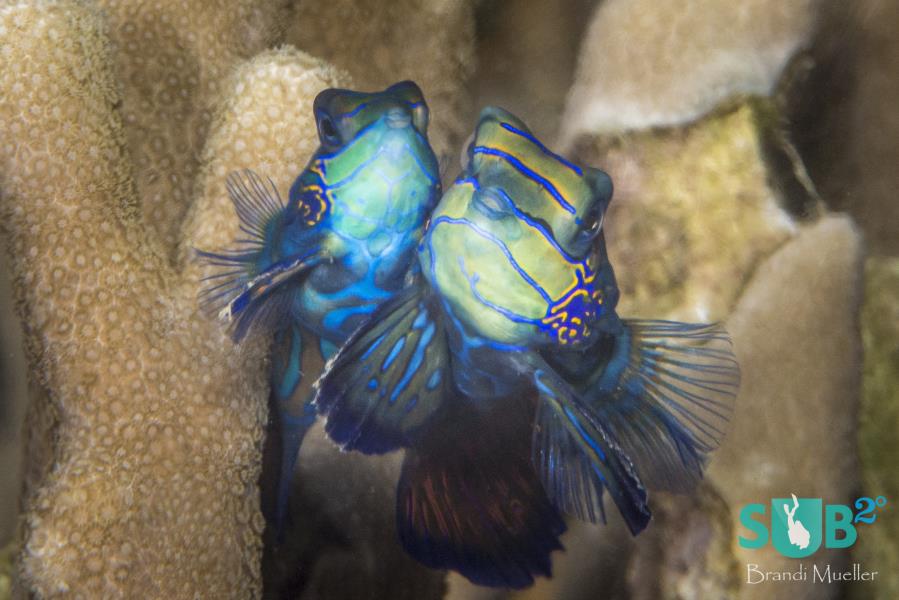
Mandarinfish-The Courtship Dance
On the reefs of the Pacific, twilight marks the beginning of the mandarinfish courtship dance. A male begins dancing, and if he’s desirable, an interested female will join. Just before the sun sets, the two fish will rise u...
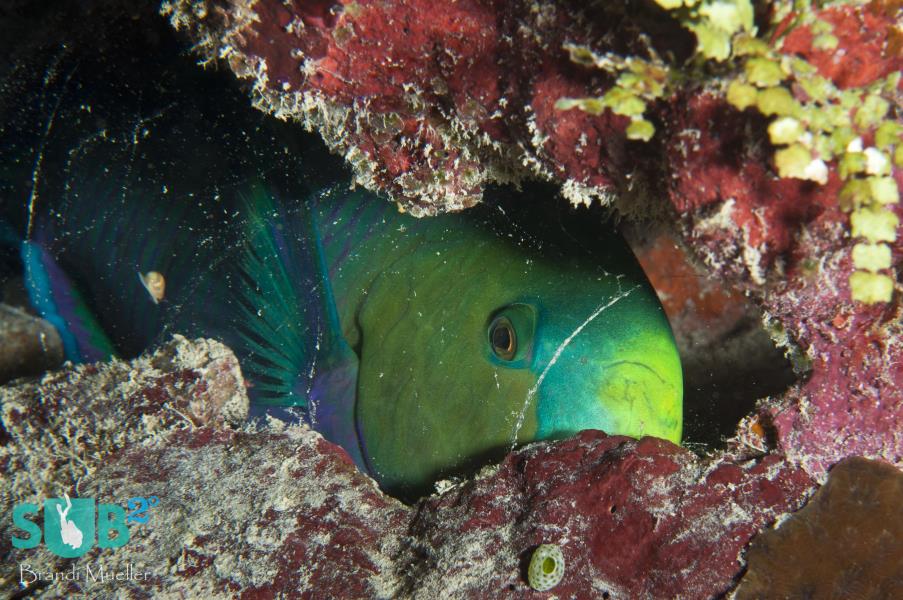
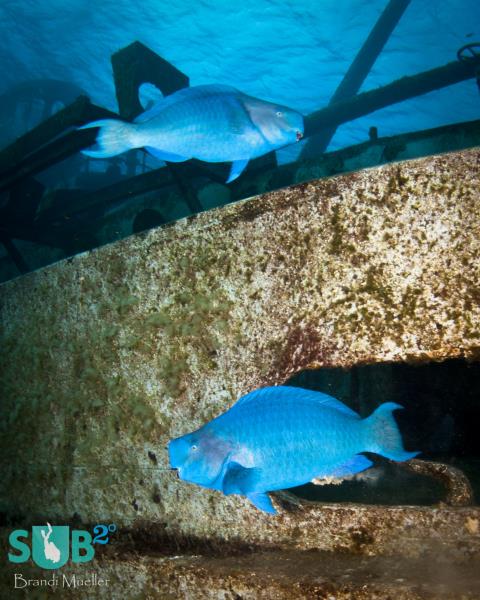
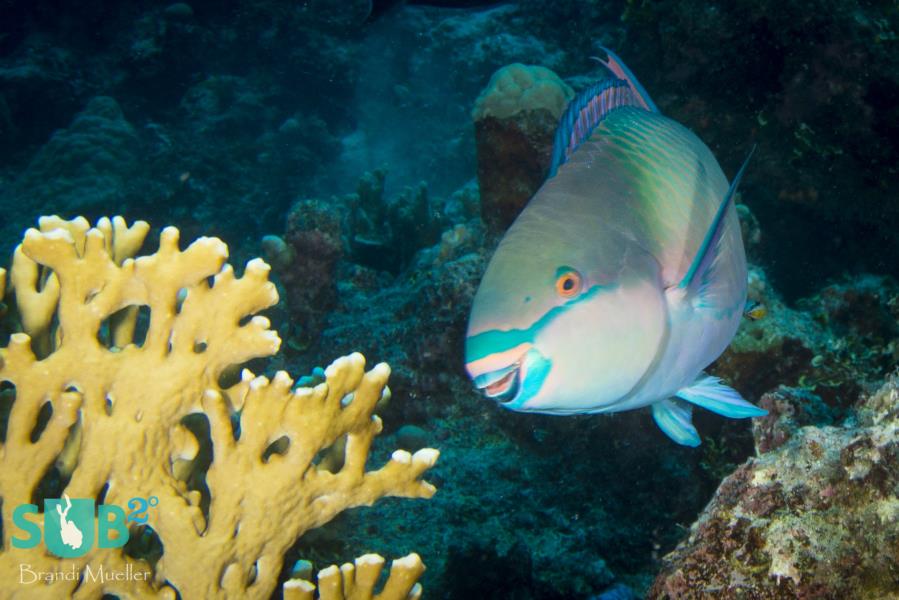
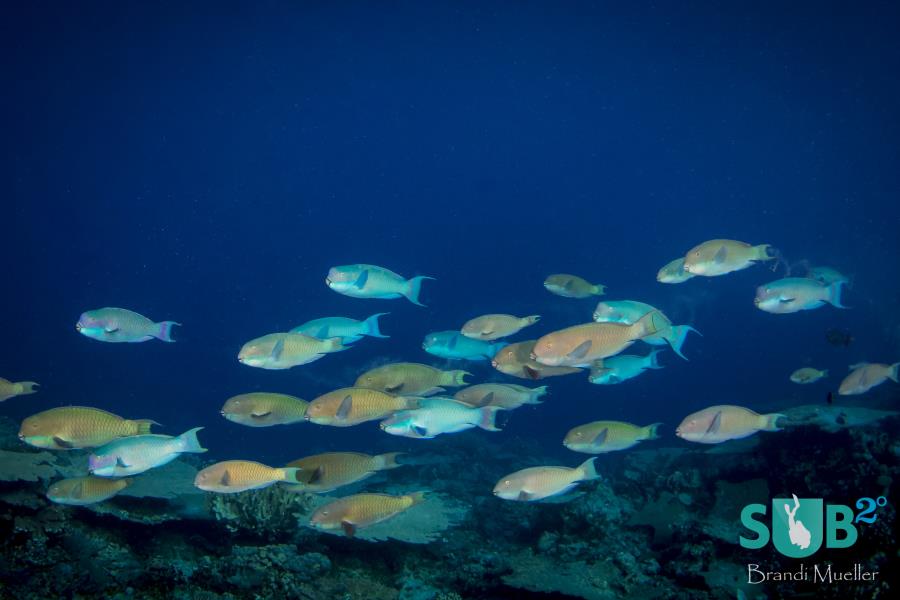


Load more comments
Timur K 7/6/2014 10:04:15 AM they always seem to be in a happy mood :)
Diana Roig 1/16/2016 9:26:20 AM Amazing!